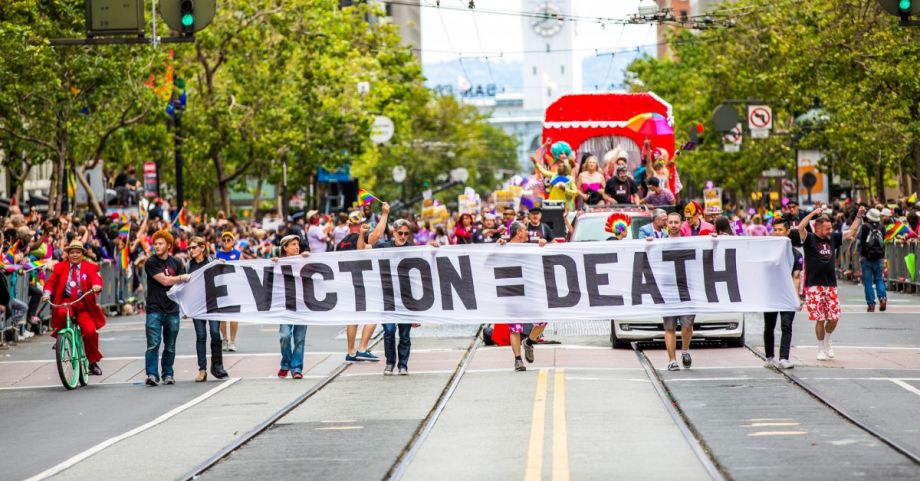
Charles McNally, Director of External Affairs, NYU Furman Center, New York University School of Law
How do you assess the progress of eviction process in New York since the adoption of the right to counsel for low-income tenants in August 2017 and law limiting rent increases for rent-regulated apartments in June 2019?
One of the big research challenges for urban scholars generally, and in this instance in particular is disentangling the precise impact of specific laws when other changes are simultaneously taking place. That challenge is magnified by COVID-19, which has thrown the rental housing market into a period of even greater uncertainty. It is therefore almost certainly too soon to assess the Housing Stability and Tenant Protection Act (HSTPA), let alone to figure out its impact on New York City’s eviction rate relative to the right-to-counsel legislation. Citywide, the total number of eviction filings is decreasing, but this trend predates 2017 and 2019 legislation. In 2019, private landlords initiated 139,614 eviction filings, down 16.7 percent from 2018 and roughly 33 percent from 2013.
That said, forthcoming research from the Furman Center suggests that in zip codes where it has rolled out, universal access to counsel has increased the share of represented tenants and decreased the share of filings that result in executed eviction warrants relative to other zip codes.
We will continue to examine the impact of recent legislation as the data become available, and to develop strategies that allow us to examine the impact of each bill.
How do you perceive the impact of the pandemic on evictions/homelessness?
In response to the COVID-19 pandemic a moratorium on new eviction filings has temporality halted legal proceedings. Federal stimulus and enhanced unemployment insurance have served as a vital lifeline to low-income households, although hundreds of thousands have not filed claims, potentially due to eligibility requirements or immigration status. Now is a critical juncture for the federal government to fund, and for states to implement widescale rental assistance programs to prevent a wave of evictions and a spike in homelessness. If enhanced unemployment benefits expire on July 31, and if moratoria on evictions are lifted, we could be facing a significantly larger housing and homelessness crisis in the coming year.
Today, over 1 in 5 of all renting families in the country spends half of its income on housing. Most renting families with low income in America spend over half of their income on housing, and at least one in four dedicates over 70 percent to paying rent and keeping the lights on. In New York, 84.3 percent of 2017 eviction filings were nonpayment cases. How would you solve the root of the problem, which is the inability to pay rent?
Housing affordability, as you point out, is a national crisis. According to Harvard University’s Joint Center for Housing Studies’ 2019 State of the Nation’s Housing Report, nearly a third of American renters are “cost burdened,” defined by the U.S. Department of Housing and Urban Development as spending more than one third of their income on rent.
At a simplified level, a family’s ability to pay rent rests on two variables: rental prices and income. Policies to help incomes keep pace with rising rents address one side of the equation, while policies to slow the increase in rents address the other. Our research shows that an increase in the supply of housing, even luxury housing, can help to ease upward pressure on rent and lead to greater affordability. While increasing supply is important, however, it is not enough on its own to alleviate rent burdens of the lowest income households. Local governments should seek to ensure that new supply comes at a range of price points so that growth is balanced among the various income levels in any given community. Subsidies, density bonuses, and mandatory inclusionary zoning are three policies that may help achieve visible additions to supply at a variety of price points. There’s also a role for tenant-based rental assistance, whether in the form of federal vouchers or local programs like CityFHEPs.

Evictions can be reduced by taking measures such as the right to counsel, rent control, housing vouchers, thereby we can prevent homelessness. How do you see the effectiveness and impact of these measures?
As mentioned above, universal access to counsel legislation and June’s HSTPA are too recent for us to know the impact they have had on homelessness, though preliminary analysis suggests that right to counsel is reducing the share of eviction filings that result in an executed warrant of eviction.
Research from the U.S. Department of Housing and Urban Development shows that federally funded housing vouchers reduce homelessness and foster housing stability among low-income and formerly homeless families. Vouchers can also provide recipients greater access to housing in a wider range of neighborhoods than otherwise accessible to them.
Rent control affects tenants or their successors who have lived in a unit continuously since July 1, 1971. Our data show that only about two percent of rental units in New York City are rent controlled, and that number is declining; therefore, we can conclude that the impact of rent control on affordability and homelessness is minimal. Rent stabilization, on the other hand, caps the percentage by which one’s landlord can increase rents using a figure determined annually by the Rent Guidelines Board. Approximately 50 percent of rental units in New York City are rent stabilized. While rent stabilization may limit rent increases, there are many causes of homelessness. Rent stabilization may help some families, but others who struggle with income or expense volatility could fall through the cracks. And it is important that the allowable rent increases cover increases in operating costs. Research from San Francisco suggests that rent regulation can encourage conversions of rental housing to condominiums and other uses.
According to several statistics, it is more expensive for cities to leave chronic homeless people on the street due to frequent use of emergency services. Therefore, wouldn’t be more effective to provide housing for these people, which is more humane and economical?
There is general consensus that, in most places, providing permanent supportive housing is more cost-effective than emergency shelter and the other public services deployed in response to chronic homelessness. In addition to the financial viability of permanent supportive housing, there are other compelling humanitarian reasons to provide greater stability to some of the most vulnerable people in our society.
Building more permanent supportive housing units in New York City comes with political and financial challenges, however. Many residents object to the siting of supportive housing in their neighborhood, though Furman Center research found little evidence that the construction of supportive housing depresses property values.
Landlords in most states are not obligated to accept families with housing vouchers, and many don’t because they shun extra building-code mandates or the administrative hassle. How to deal with that and what should be the role of the state in the process of rent control?
Source of income protection laws bar landlords from refusing to accept housing vouchers. New York City has had a source of income protection law for years, and as of 2019, all landlords in New York State are barred from discriminating against individuals and families using housing vouchers. Though understanding how strictly the laws are enforced is essential, currently 42 jurisdictions across the United States ban discriminating against families with housing vouchers.
Research suggests that voucher holders face significant discrimination during a housing search, even in jurisdictions with source of income protections. A recently commissioned HUD study of landlords in five different markets reports voucher denial rates ranging from 78 percent in Fort Worth, Texas to 15 percent in Washington, DC, as well as higher denial rates in lower poverty neighborhoods.
In forthcoming research, the Furman Center finds some evidence that source of income discrimination protection helps voucher holders reach lower poverty neighborhoods, which research shows increases lifetime earnings for children who relocate at young ages. In addition, programmatic reforms to make the voucher program easier to use (without jeopardizing health and safety) might encourage more landlords to accept vouchers.
(Interview with Jan Maloch, PIQASO)


